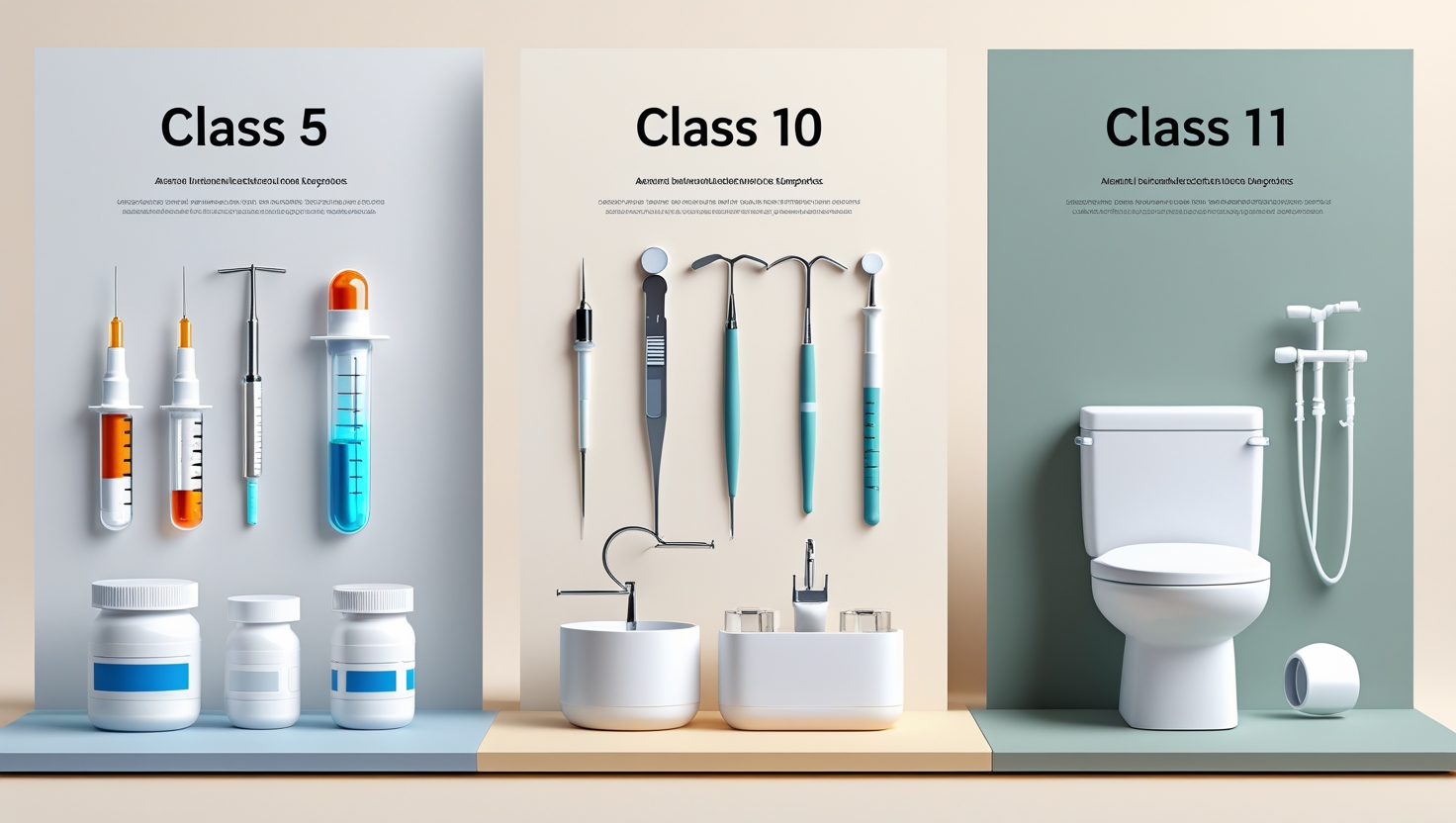When registering a trademark, one of the most important and often confusing steps is selecting the correct trademark class. The right class ensures that your intellectual property is protected under the category your products or services fall into. If your business deals in lighting, heating, cooling, cooking appliances, or sanitary installations, you may be looking at Trademark Class 11. But how do you know it’s the right fit? And how does it compare with other trademark classes?
In this blog, we’ll provide a complete comparison between Trademark Class 11 and other relevant classes, helping you determine exactly which class or classes you need based on your offerings.
🔍 What is Trademark Class 11?
Trademark Class 11 includes apparatus for lighting, heating, steam generating, cooking, refrigerating, drying, ventilating, water supply, and sanitary purposes. This class mainly covers physical goods and devices related to environmental and utility management.
Examples of Goods in Class 11:
- Electric lamps and bulbs
- Air conditioners
- Water heaters and geysers
- Refrigerators and freezers
- Ovens and cooking stoves
- Fans and ventilation equipment
- Faucets, showers, and sanitaryware
- Water purifiers and dispensers
If your business manufactures or sells appliances or installations used for light, heat, air, water, or sanitation, Class 11 is crucial for your trademark protection.
🆚 Comparing Class 11 With Other Trademark Classes
Trademark classes are divided into 45 categories: Classes 1 to 34 for goods and Classes 35 to 45 for services. Here’s how Class 11 compares with other nearby or commonly confused classes.
✅ Class 11 vs. Class 7 – Machines and Machine Tools
- Class 11 covers appliances that use or control air, water, or heat (like air conditioners or geysers).
- Class 7 covers machines or machine tools (like electric motors, vacuum pumps, etc.).
Example:
- An industrial boiler that heats water = Class 11
- A motor that powers a boiler = Class 7
👉 Use Class 11 if your product is a finished appliance used directly by the consumer for heating, lighting, or sanitation.
✅ Class 11 vs. Class 9 – Scientific and Electrical Apparatus
- Class 11 includes functional home appliances like lighting, air conditioning, or refrigerators.
- Class 9 includes technical or scientific equipment, such as thermostats, sensors, or control panels.
Example:
- A refrigerator = Class 11
- A temperature controller used in refrigerators = Class 9
👉 If you manufacture a complete appliance, go with Class 11. If you make a smart controller or sensor, consider Class 9.
✅ Class 11 vs. Class 21 – Household Utensils and Containers
- Class 11 includes electrical or gas-operated appliances.
- Class 21 includes manual tools and containers used in the kitchen or home.
Example:
- Microwave oven = Class 11
- Manual juicer or serving bowl = Class 21
👉 If your product uses electricity, gas, or heat, it belongs in Class 11. If it’s manual or a container, check Class 21.
✅ Class 11 vs. Class 35 – Advertising and Business Services
- Class 11 is for physical goods (products).
- Class 35 is for business services like marketing, sales, or retail.
Example:
- A brand of geysers or fans = Class 11
- A retail store selling those products = Class 35
👉 If you’re a product manufacturer, register in Class 11. If you offer sales, eCommerce, or marketing services, also consider Class 35.
📌 Why Choosing the Right Class Matters
Registering your trademark in the wrong class can lead to:
- ❌ Lack of protection – Your trademark won’t protect your actual product category.
- ⚠️ Opposition or Rejection – Other businesses in the right class may challenge your application.
- 💸 Legal Issues – Competitors may copy your brand in your actual product space.
So, understanding exactly where your product fits is vital for brand protection and enforcement.
📂 Common Business Types and Their Class Needs
Here’s a quick guide for businesses that might be confused between Class 11 and other classes:
| Business Type | Suggested Classes |
|---|---|
| Home appliance manufacturer | Class 11 |
| Water purifier company | Class 11 |
| Electric motor manufacturer | Class 7 |
| Smart home device startup | Class 9 (for tech) + Class 11 (for appliance) |
| Kitchen utensil brand | Class 21 |
| HVAC installation & services | Class 37 (for services) + Class 11 (for products) |
| Online home appliance retailer | Class 35 + Class 11 |
🔄 Multi-Class Registration: When and Why
Often, a business’s products may overlap multiple trademark classes. In such cases, multi-class trademark applications allow you to protect your brand across relevant categories.
Example:
If you sell air conditioners (Class 11), but also manufacture sensors or smart controllers (Class 9), it’s best to register under both classes.
✅ Benefits of Multi-Class Registration:
- Broader brand protection
- Blocks similar marks across sectors
- Supports business expansion into multiple product lines
💡 Case Study: A Real-World Example
Let’s say your brand CoolTech sells air conditioners with built-in smart sensors.
You should register:
- Class 11 – for the air conditioner unit
- Class 9 – for the sensors, smart thermostats, remote controls
- Class 35 – if you also sell them through your own online store
Failing to register under the relevant classes might mean someone else registers CoolTech for sensors (Class 9) and legally operates under your name in a similar industry — causing brand dilution.
🛡️ Trademark Class 11 Protection: What You Get
Registering under Class 11 grants you:
- ✅ Exclusive rights over your trademark for listed products
- ✅ Legal authority to stop imitators
- ✅ Nationwide recognition of your brand
- ✅ Stronger brand image for consumers and partners
- ✅ Easier expansion to international markets
📝 How to Register in Class 11
- Trademark Search
Check the trademark database to ensure your brand name or logo is not already registered in Class 11. - Drafting and Filing
Prepare the application with product descriptions specific to Class 11. - Examination
Authorities will examine your application for conflicts or errors. - Publication
If accepted, it will be published in the Trademark Journal for public objection. - Registration
If no objections are raised, you’ll receive the trademark certificate for Class 11.
🏁 Conclusion: Which One Do You Need?
Choosing between Class 11 and other trademark classes depends entirely on what your business produces or offers. If your goods involve appliances or equipment for air, water, heat, or light, Class 11 is essential. But if your business overlaps with technology, retail, or machinery — you might need multiple classes.
Final Tip:
👉 Don’t guess the trademark class — get professional advice. An experienced trademark consultant can help you identify the right class(es), handle multi-class filings, and ensure that your brand receives complete protection.
🚀 Secure Your Brand with VMK Professionals
At VMK Professionals, we simplify the trademark process for you. Whether you’re confused between Class 11 or need multi-class registration, our experts guide you every step of the way. We ensure that your business gets proper legal protection, brand security, and peace of mind.
📞 Get in touch with us today for a free consultation and protect your brand the right way.


